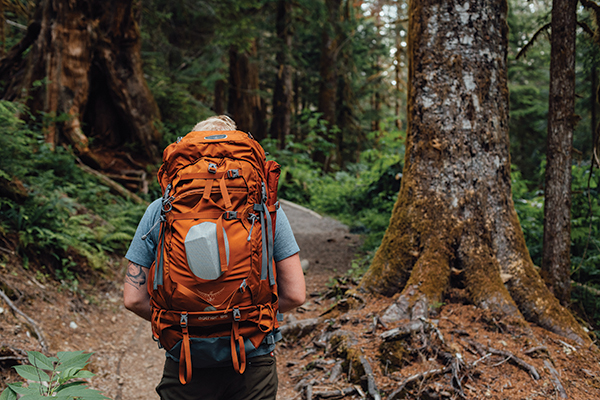Washington’s beautiful shores, mountain peaks and stunning forests have inspired for generations. The state’s diverse geography and unique culture draw tourists from around the world.
From outdoor recreation to urban sightseeing, tourism is a major economic driver across the state. Washington’s tourism industry is the fourth largest in the state, generating $21 billion annually. Before the COVID-19 pandemic, the sector supported more than 180,000 workers across the state. While the aftershocks of the pandemic are still being felt across the state, Washington’s scenic and cultural appeal are already beginning to rebound.
We recently spoke with Michelle Thana, Washington Tourism Alliance’s new director of marketing about the industry’s efforts to roll out the welcome mat to visitors in a safe and enjoyable way.
The last year and a half have brought some unique challenges to the tourism industry across the country. How has Washington weathered this storm?
Michelle Thana: We’ve seen a lot of resiliencies in our industry, from restaurants to hoteliers to tour operators finding creative approaches and changing their operating plans over and over as regulations rapidly changed. This summer in particular started to bring recovery, but that recovery has not been equal around the state. Many of our outdoor recreation areas are busier than ever and have to plan to disperse visitors, while our cities still haven’t seen visitation close to 2019. We’re grateful for the relief efforts that have been directed at our industry and will continue to look for partnerships to assist in long-term recovery.
What is Washington Tourism Alliance’s approach to encouraging the industry’s recovery?
Thana: We’ve looked for ways to stimulate activity that aligns with recommendations from public health. Early on, our team worked with destinations around the state to launch Show WA Love, an initiative encouraging purchasing local gift cards. As recovery progressed, we created the Explore Washington’s Backyard, a passport that offers prizes for people visiting outdoor attractions around the state. We vetted these attractions with local stakeholders to make sure we weren’t sending folks to attractions that are already experiencing crowding.
This summer, we also began marketing on Expedia and social media to inspire travelers planning upcoming vacations. We’re also looking at our long-term visitor strategy for the state. We’ve partnered with Tread Map App to create a pilot program that will help direct travelers from highly trafficked trails and outdoor attractions to less-crowded options nearby. That pilot launched this spring in the Trails & Lakes region, and we’ll be looking to expand it around the state.
We also have a destination development program that helps regions and destinations identify, grow, and eventually market their tourism assets to help grow the tourism economy in under-served rural regions of the state.
What are some of the top attractions in Washington?
Thana: Some of our most visited attractions are our three National Parks, State Parks, National Scenic Areas and National Historic Sites, along with Seattle Center attractions.
We think one of the best kept secrets is the natural diversity that Washington offers. From the islands to the rainforest to the desert, to wine country and waterfalls in the Gorge, there is an amazing variety of landscapes and an amazing array of people who create memorable businesses that visitors can interact with.
What is your favorite thing about living in and promoting the state?
Thana: One of the best things about promoting the state is being able to share all the things we love about living here, from world-class food in approachable settings to unbelievably photogenic sunrises on the eastern side of the state. It’s even more incentive to keep exploring and uncovering new and interesting things to do and find new stories to tell around the state. As a resident, no state income tax is a nice added perk as well!

